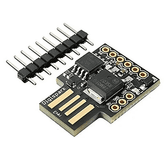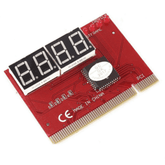Key Components of IoT and Their Role
Summary
If you’ve ever used a smartwatch to track your steps, asked a smart speaker to play a song, or adjusted your home thermostat from your phone, you’ve interacted with the Internet of Things (IoT).
It’s a technology that has quietly woven itself into the fabric of our daily lives, connecting the physical objects around us to the digital world. While the concept might sound futuristic, its core function is quite simple: gathering information from the environment, sharing it over a network, and using that information to perform a task.
The power of IoT lies in its ability to make everyday objects "smart." It transforms them from standalone items into active participants in a vast, interconnected network. A simple refrigerator becomes capable of ordering groceries when supplies run low, and a car can alert emergency services after a collision.
But how does this intricate dance of data and devices actually work? Understanding the different components of the IoT is key to grasping the technology's transformative potential. Let's explore the fundamental building blocks that make this interconnected world possible.

What is IoT?
The Internet of Things (IoT) refers to a vast network of physical objects—or "things"—embedded with sensors, software, and other technologies for the purpose of connecting and exchanging data with other devices and systems over the internet. These devices range from common household items, like lightbulbs and thermostats, to sophisticated industrial tools. In essence, IoT extends the reach of the internet beyond computers and smartphones to a whole universe of everyday objects.
At its core, IoT is about data. Devices with embedded sensors collect data from their surroundings, which could be anything from the temperature of a room to the location of a delivery truck. This data is then shared through some form of connectivity and often sent to a central location for processing and analysis. The insights gained from this analysis can then be used to trigger an action, such as automatically adjusting an air conditioning system or sending an alert to a user's phone.
How does an IoT System work?
An IoT system operates in a continuous cycle of collecting, communicating, analyzing, and acting on data. It begins with the "things" themselves, which are the frontline devices gathering information from the physical world. This raw data isn't useful until it's sent somewhere to be processed.
Using various forms of wireless communication, the data travels from the device to a central hub or the cloud. Once there, powerful software analyzes the information to identify patterns, detect anomalies, or trigger pre-programmed responses. Finally, the outcome of this analysis is communicated back to the device or presented to a user, who can then make an informed decision or let the system take an automated action. This entire process can happen in a matter of seconds, creating a seamless and responsive interaction between the physical and digital worlds.
Key Components of IOT
An effective IoT system is not a single piece of technology but an ecosystem of interconnected parts working in harmony. As illustrated in the infographic, the flow of data through these components is what brings an IoT application to life. Let's break down each of these core elements.

1. The "Thing" or Device (Sensors and Actuators)
The journey of an IoT system begins here, with the physical "thing" itself. This is the object on the front line, interacting directly with the environment. Embedded within these devices are sensors and actuators in IoT, which serve as the system's eyes, ears, and hands.
- Sensors: These are the sensory organs of the IoT system. They collect raw data from the surrounding environment. This data can be as simple as a temperature reading, a motion detection event, a light level, or as complex as a live video feed. For example, a sensor in a smart farm might measure soil moisture, while one in a smart city could detect air quality.
- Actuators: While sensors collect information, actuators act on it. They are the components that can effect a change in the physical world based on the data received. An actuator can turn a light on or off, adjust a motor's speed, open or close a valve, or sound an alarm. In our smart farm example, once the sensor reports dry soil, an actuator would be triggered to open a valve and start the irrigation system.
Together, sensors and actuators bridge the gap between the physical and digital realms, allowing the IoT system to both observe and influence its surroundings.
2. The Gateway (Connectivity and Edge Devices)
Once the device collects data, it needs a way to send it to the cloud for processing. This is where connectivity and gateways come in. The data is transmitted from the device, often via a wireless network, to a gateway.
- IoT gateways and edge devices act as intermediaries. A gateway aggregates data from multiple sensors and devices and then transmits it to the next stage. It can also translate between different communication protocols used by various devices before sending the data on. This is crucial because not all sensors speak the same "language."
- IoT connectivity technologies are the pathways for data transmission. There is a wide array of options, each suited for different applications based on factors like range, power consumption, and bandwidth. Common technologies include:
- WiFi: Ideal for high-bandwidth applications in homes and offices.
- Bluetooth and BLE (Bluetooth Low Energy): Perfect for short-range communication between personal devices, requiring very little power.
- Cellular (4G/5G): Provides reliable, wide-area coverage for mobile assets like vehicles or remote monitoring stations.
- LPWAN (Low-Power Wide-Area Network): Technologies like LoRaWAN and NB-IoT are designed for long-range communication with low-power devices, making them suitable for applications like smart agriculture or city-wide sensor networks.
In some modern IoT system components, the gateway is also an "edge device," meaning it has its own processing power. This allows it to perform some initial data filtering or analysis—a concept known as edge computing—before sending only the most important information to the cloud. This reduces latency and the amount of data that needs to be transmitted.
3. The Cloud and Analytics (Data Processing)
The cloud is the brain of the IoT system. It’s where the vast amounts of data collected by the devices are stored, processed, and analyzed. This is typically a high-performance server infrastructure with massive storage capacity and powerful processing engines.
- IoT data processing is the core function performed in the cloud. Sophisticated software and algorithms sift through the incoming data to extract meaningful insights. This can range from simple tasks, like checking if a temperature reading is within a predefined range, to complex analysis using machine learning to predict future trends. For instance, data from thousands of smart meters can be analyzed to forecast energy demand across a city.
- Analytics is what turns raw data into actionable information. After the data is processed, the analytics engine identifies patterns, discovers anomalies, and generates reports or alerts. In a smart factory, analytics might detect that a machine is vibrating more than usual, signaling that it needs maintenance before it breaks down.
The cloud provides the scalability and power needed to handle the "big data" generated by potentially millions of IoT devices simultaneously.
4. The User Interface
The final piece of the puzzle is the user interface (UI). This is the component that makes the insights from the analytics engine accessible and useful to a human user. The UI is how a person interacts with the IoT system, monitors its status, and gives commands.
The user interface can take many forms:
- A mobile app on your smartphone that lets you view your home security camera feed or adjust your thermostat.
- A web-based dashboard used by a factory manager to monitor production line efficiency.
- An alert notification sent via email or SMS, such as a message from your smart smoke detector that it has detected an issue.
- A voice interface on a smart speaker that allows you to control your lights with a simple command.
A well-designed UI presents complex data in an intuitive way, allowing users to make quick, informed decisions. It closes the loop by connecting the automated intelligence of the system with human oversight and control, enabling users to manage and command their network of devices effectively.
Conclusion
From a single sensor gathering a piece of data to a user making a decision on their smartphone, the journey through the Internet of Things is a seamless flow of information across distinct but deeply interconnected components. Each element—the device, the gateway, the cloud, and the user interface—plays an indispensable role. The sensors and actuators provide the link to the physical world, connectivity gateways bridge the communication gap, the cloud offers the intelligence to process and analyze data, and the user interface brings that intelligence into the hands of the user.






